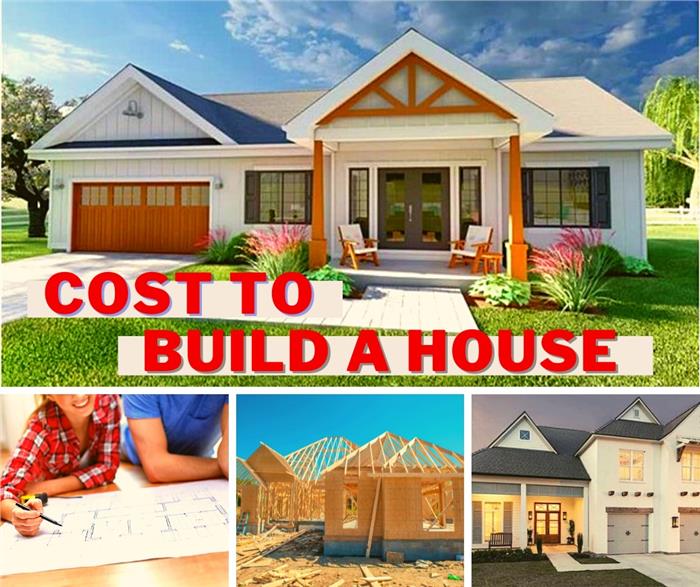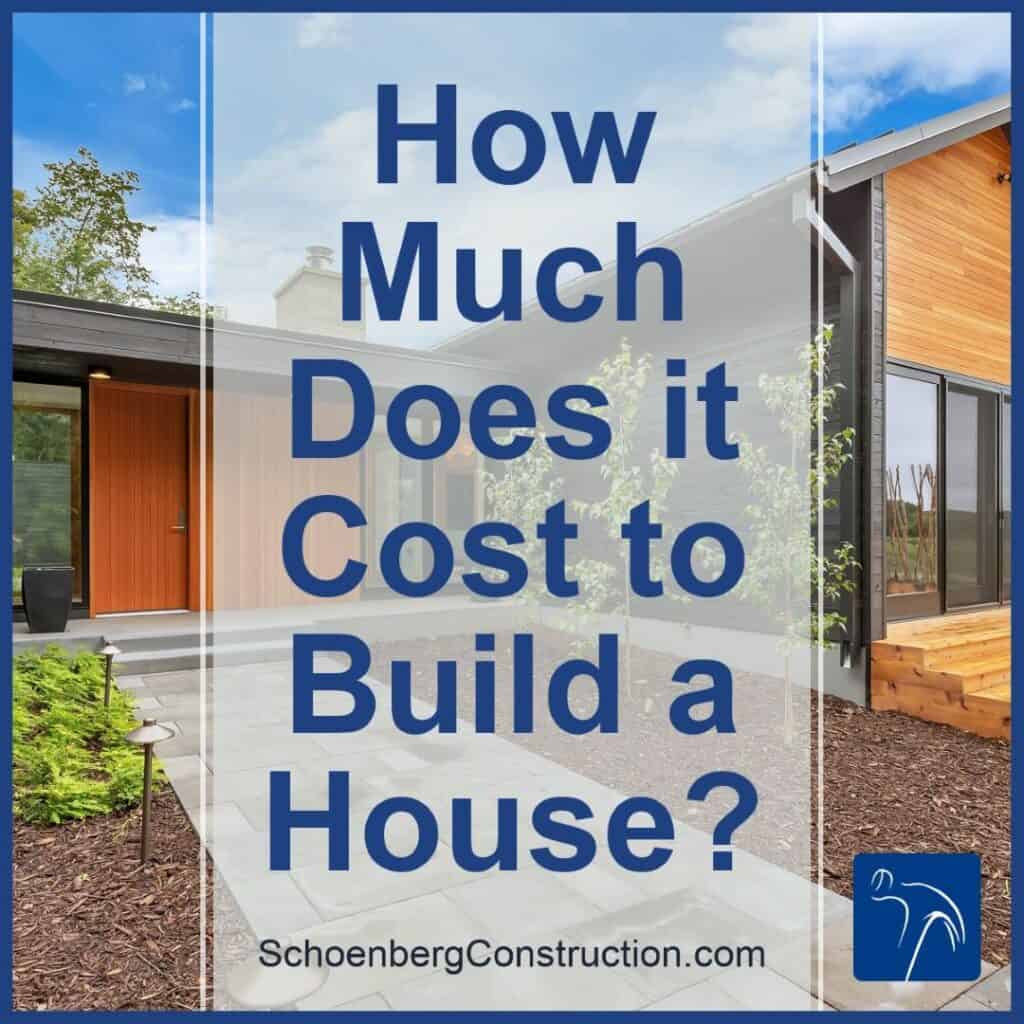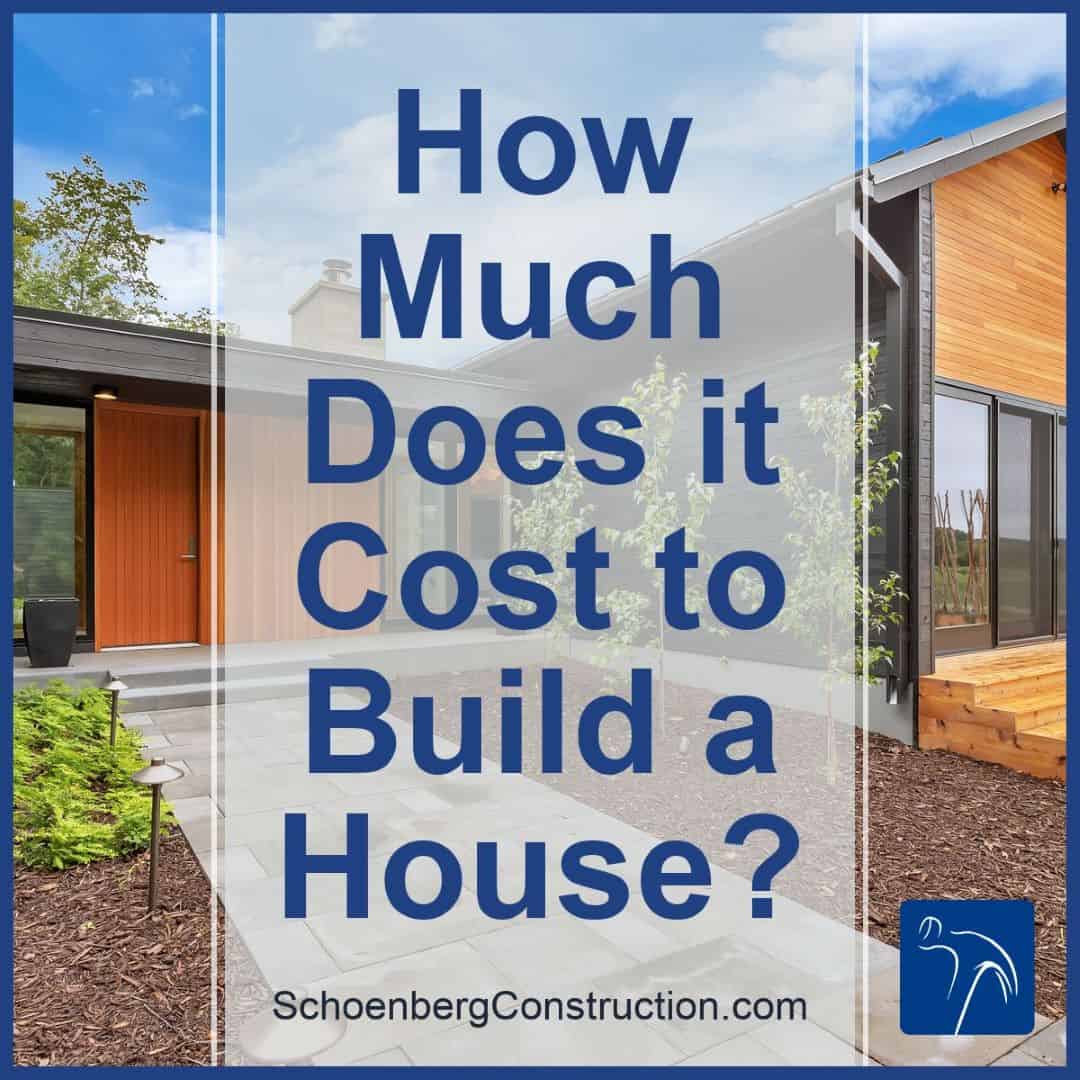Table Of Content

Determining if buying or building a home is more cost-effective depends on where you live and what type of house you’d construct. On average, the cost to build a home is $308,588 but the median sales price of a home in the U.S. is about $431,000, as of the third quarter of 2023, according to the Federal Reserve Bank of St. Louis. Of course, your cost to build could be higher, for example, if you opt for higher-end finishes or more bedrooms. With that in mind, here are some of the most crucial steps when building a house and their average costs.
What are some popular types of tiny homes?

Amna Shamim is a writer and digital marketing consultant who works with local and e-commerce businesses, ensuring they are easily findable online to and trusted by their clients. Her words have been featured in Glamour Magazine, Business Insider, Entrepreneur, Huff Post, Thrive Global, BUST, Paste, and other publications. Ahern often works with clients who are tearing down properties to make room for new construction — an approach that can have significant tax benefits that make it easier to afford a new house, he says.

House Building Calculator Estimate Construction Cost
New construction plumbing costs can range from $1,500 all the way up to $17,500. For each system, your home’s total square footage will be a key factor in determining your overall costs. Building a small or tiny home costs between $35,000 and $75,000, with an average size of 600 square feet or less.
Fair price breakdown
You will also need to run utility lines back to your property, and possibly factor in the cost of grading the land and laying a driveway. After this, there could still be costs related to land, utility hookups, landscaping, driveways, permits, taxes, and fees. Most developer-planned subdivisions will also have a playground, picnic tables, a BBQ area, and even a pool. On the downside, it could mean there is construction around your home for some time, and it won't be custom designed. Corinne Tynan is a highly skilled contributing editor at Forbes Home, with a wealth of knowledge and expertise in various areas such as interior design and home improvement.
Unfortunately, while construction supply chains have finally stabilized since the pandemic, construction prices have remained at an all-time high. “As a professional, we can iron out your goals, see what you’re looking for, pinpoint a geographical area, and connect you with builders,” she says. Also, consider local regulations, as residential construction restrictions vary by city, county, and state. Check out the land rules and regulations before embarking on construction. There are plenty of reasons to build a new house rather than buy an existing one. To start, everything will be new, from the carpets to the sinks to the dishwasher.
Removing this category from the total house-building cost saves six-percent or $23,650 of the total cost. Foundation work such as grading, excavation, foundation building, concrete pouring, retaining wall building, and backfilling collectively costs close to $40,000 or about 10-percent of the cost of building the house. Electrical work costs about $24,000, or about six-percent of the total building cost. New homes are expensive, so it's important to know how much it costs to build a house before you speak to builders. You can get up to 3,000 square feet of construction with this budget. You could choose to build a three-bedroom house, or you could bump up the high-end appliances and finishes on a two-bedroom home.
'The average cost of building a house relative to buying an existing one has never been higher' - Interest.co.nz
'The average cost of building a house relative to buying an existing one has never been higher'.
Posted: Mon, 30 Oct 2023 07:00:00 GMT [source]
The coordination required to manage those contractors and schedule the layers of the building process will be a full-time job, and any mistakes will cost time and money, so the savings may not add up. Home builders who already have a lot of knowledge and connections with other building professionals may be able to manage their own home build successfully, but for most, this really is a job for a professional. By combining the walls and roof into two sharply angled walls that meet at a peak, A-frame houses cut down on both material and labor costs. Averaging between $90 and $130 per square foot, these houses go up quickly, but they limit the usable space of the floor plan somewhat because of the angled interior walls. Charming, quaint, and eye-catching, Victorian homes aren’t really built any differently than other homes—it’s the finish that adds to the final building cost. Millwork, trims, and flourishes, along with custom paintwork and richly stained trims, add to material and labor costs, as do custom peaked roofs, wraparound porches, and turrets.
Get an estimate from a local pro
Expect to pay a house framer between $7 and $16 per square foot for an average total of $20,000 to $50,000. On average, hiring professionals to build a house from scratch costs $280,000, though most homeowners pay between $110,000 and $450,000. The thing is, problems typically come up in the house-building process, even for the most experienced teams. If you’re new to home building, mistakes will happen, and they will be costly, if not up front, then later on when amateur work requires professional repair.
If your budget is under $400,000
Installation of front- and backyard landscaping averages an additional $3,451, according to HomeAdvisor. Read our guide to learn how to secure a land loan, the pros and cons of this loan type and more. This includes adding insulation, drywall, flooring, interior doors and all the basic components that will turn the newly constructed structure into a livable home. Cabinets and countertops will be installed, walls will be painted and appliances will be hooked up.
Homeowners can take on outdoor work by building patios and walkways or planting trees, shrubs, and grass. Change orders usually, but not always, drive up the cost of building the home. Change orders are agreements that the builder and homeowner both sign to change the original contract.
This compensation may influence the selection, appearance, and order of appearance on this site. The information provided by Quicken Loans does not include all financial services companies or all of their available product and service offerings. Article content appears via license from original author or content owner, including Rocket Mortgage. At the time of this writing, HomeAdvisor reports the average cost to build a house is $302,194, according to project costs reported by more than 500 members. However, the home services company says the price can range between $157,779 and $477,594.
Sometimes called duplexes or townhouses, depending on your region, row houses connect two complete homes or feature common walls with other units. This can result in reduced exterior building cost when spread over multiple units, but it can also lock builders into required finishes or features that add to the price. Truly custom homes can cost as much as the home builder has to spend. Custom and luxury homes will generally average out to $300 to $500 per square foot, and these homes tend to be larger, so building costs are high—as are the costs of fit and finishing.
Material costs will vary depending on your building material choices regarding long-term durability, eco-friendliness, energy costs, and social costs. Regardless of whether you choose a micro-house at 100 square feet or get extensive at 400 square feet, comprehending the pros and cons will allow you to make fundamental options. A tiny home can last just as long as any traditionally sized home, depending on the quality of materials and designs used in its construction. Therefore, your tiny home could last for decades with proper maintenance. This micro-dwelling has seen an almost meteoric rise in popularity over the last decade, thanks to lower prices and a more sustainable mindset. Tiny house communities are typically constructed in areas without zoning restrictions and often feature a larger central structure, communal resources, and gathering spaces.
A far cry from the early Sears homes of the early 1900s, prefabricated homes can be as simple or as luxurious as the designer likes and come at a cost of 10 percent to 15 percent less than on-site builds. The pieces of the home are constructed off-site, then trucked to the location and assembled in their final position. Design options may be somewhat limited depending on the manufacturer, but labor and transportation costs are reduced, as is the actual on-site build time.
Cottages are usually small and quaint in appearance, but they can be surprisingly expensive to build. Authentically maintaining the cottage style requires a lot of detail, high-end materials, and custom building to fit efficient living space into a small footprint. Expect to pay about $250 per square foot and up, depending on the level of customization. Log cabins are beautifully rustic and have a handmade charm, costing approximately $125 to $300 per square foot. The labor and material costs will vary, but the build requires expertise and training, so you may be limited in terms of finding a builder, or you may have to wait until one is available.
On average, you can expect to pay from $60 and $140 per square foot to build a house by yourself. Costs could run as low as $50 per square foot and as high as $200 per square foot, depending on how much labor you take on yourself. Prices have gone up 5% to 10% this year, and many parts of the country are experiencing long delivery times.

No comments:
Post a Comment